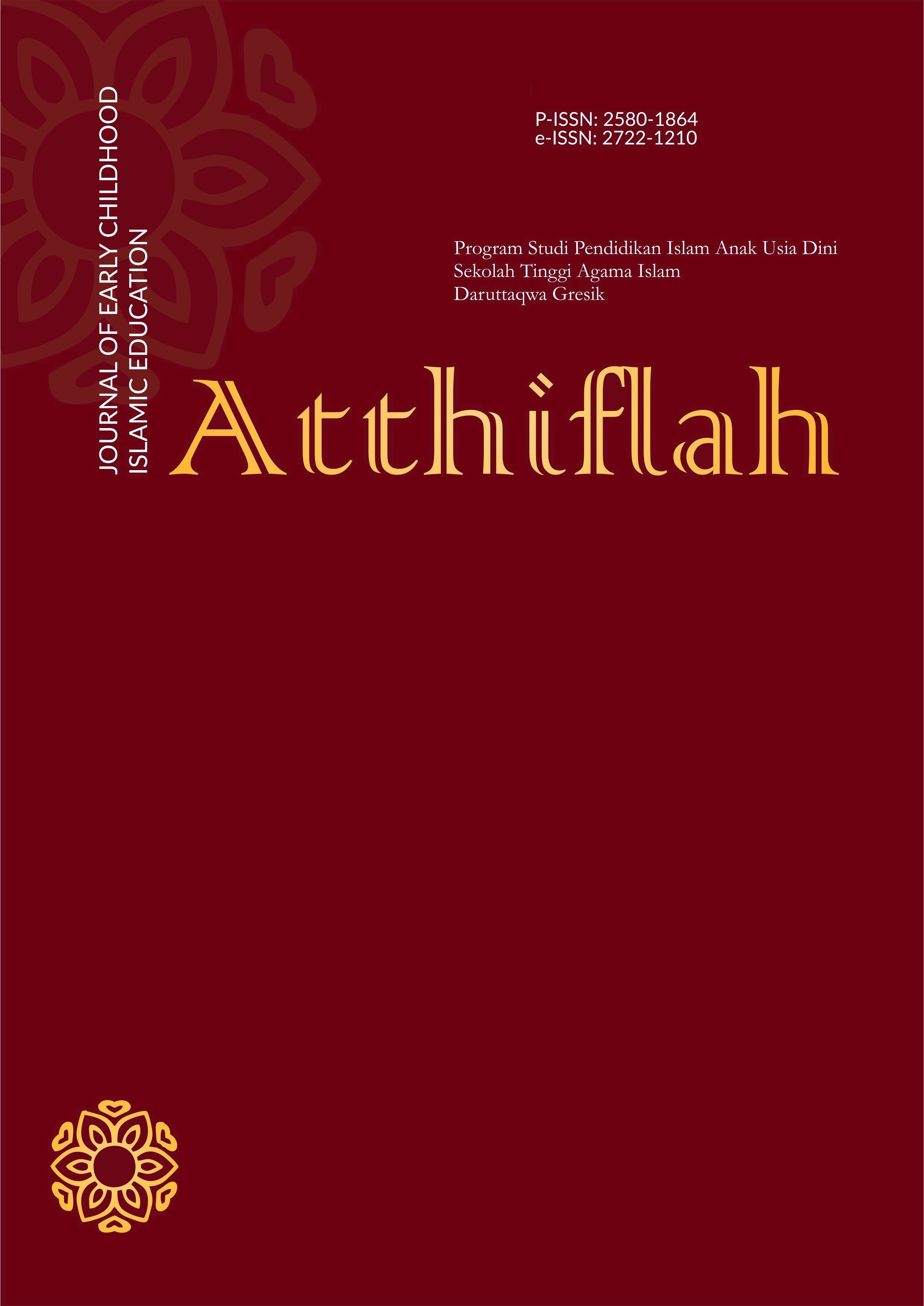Komunikasi Kepala Satuan Paud Dalam Pengembangan Pendidikan Islam Melalui Pendekatan Teori Johari Windows (Studi Kasus Pada Paud Tunas Cendikia Binjai)
DOI:
https://doi.org/10.54069/atthiflah.v12i1.744Keywords:
Johari Windows theory, organizational behavior, Islamic organizational communication.Abstract
The Johari Windows concept offers a deep understanding of how individuals perceive themselves and how these perceptions interact with other team members. Through the qualitative descriptive research method with purposive sampling, it is hoped that the results that will be achieved will objectively match the facts and data in the field without any engineering. Through analysis of this concept, it can provide insight into how to improve communication within work teams to achieve better performance. Good communication is communication that involves openness and mutual understanding between individuals. Knowing yourself is important, because there is an art to understanding your weaknesses and strengths. Meanwhile, the Johari Windows concept is based on internal and external communication patterns in Tunas Cendikia Binjai PAUD Principal, Internal Communication: (1) Open Quadrant, open information between staff, teachers and administration. (2) Hidden Quadrant: There may be some internal issues such as inter-staff conflict, worry or uncertainty. (3) Closed Quadrant: Some aspects of staff or teacher performance may be confidential to certain individuals, but known to management or fellow staff. (4) Unknown Quadrant: An individual's potential for developing new teaching methods, problem solving, or leadership skills that has not been fully explored or recognized. Meanwhile, External Communication: (1) Open Quadrant: Information shared with students' parents, community or other institutions. (2) Hidden Quadrant: There may be certain issues, such as student behavior problems or challenges in institutional management, that are not publicly disclosed but may be understood internally. (3) Closed Quadrant: The public face of the institution, such as an image or reputation that is carefully guarded, but there may be certain issues that are not revealed publicly. (4) Unknown Quadrant: Community expectations or needs that have not been fully accommodated by institutions..
Downloads
References
Adiyatma, Rizki Ramadhoni, S. R., Santera, T., & Lubis, P. R. V. (2025). PENGEMBANGAN KONSEP DIRI MELALUI TEORI JOHARI WINDOW PADA SANTRI PONDOK PESANTREN MA’ARIF JAMBI. , 3(1), 121-125. Jurnal Akselerasi Merdeka Belajar Dalam Pengabdian Orientasi Masyarakat (AMPOEN): Jurnal Pengabdian Kepada Masyarakat, 3(1). https://doi.org/https://doi.org/10.32672/ampoen.v3i1.3533
Bolton, R. (1979). People Skills: How to Assert Yourself, Listen to Others, and Resolve Conflicts.
Brown, R. (2000). Group Processes: Dynamics within and between groups (2nd ed.). Blackwell Publishers.
Hase, S., & Kenyon, C. (2007). Self-determined learning: Heutagogy in action. Continuum International Publishing Group.
Iman, M., Erlina, I. A. H., Mujahid, T., Sole, Y. Y. E., Wagimin, Syaf, Siadari, U. B., Zarka, Z., & Handoko, A. N. | Y. L. |. (2024). MANAJEMEN PENDIDIKAN Teori dan Praktik dalam Sistem Pendidikan. In Z. R. Bahar (Ed.), Sustainability (Switzerland) (I, Vol. 11, Issue 1). PT. Literasi Nusantara Abadi Grup.
Ingham, Harry., & Luft, Joseph. (1995). Los Angeles: University of California. The Johari Window: A Model for Human Relations Training. Proceedings of the Western Training Laboratory in Group Development.
Judge, T. A., & Robbins., S. P. (2017). Essentials of organizational behavior (17th ed.). Pearson Education, Inc.
Luft, J. (1984). Group Processes: An Introduction to Group Dynamics (3rd ed.). Mayfield Publishing Company.
Luft, J. (1996). Of Human Interaction: The Johari Model. Mayfield Publishing Company.
Luft, Joseph., & Ingham, Harry. (1995). The Johari Window, a graphic model of interpersonal awareness. University of California Western Training Lab.
Maulana, R., Mujahid, T., & Pamungkas, F. H. (2024). CHALLENGES AND OPPORTUNITIES IN THE SOCIETY 5 . 0 ERA. International Journal of Educational Innovation and Science Development Research, 1(2), 1–9. https://doi.org/https://doi.org/10.63736/ijeisdr.v1i3.493
McShane, S. L., & Von Glinow, M. A. (2018). Organizational Behavior: Emerging Knowledge, Global Reality (8th ed.). McGraw-Hill Education.
Mujahid, T., Sufni, N., & Syafiq, Z. Z. (2025). EDUCATION AND SOCIALIZATION OF DISASTER PREPAREDNESS TO CHILDREN IN. ALGEBRA?: JURNAL PENDIDIKAN, SOSIAL DAN SAINS, 5(2), 41–46. https://doi.org/https://doi.org/10.58432/algebra.v5i2.1249
Rahayu, D. I., Ardiansyah, A., Al-hafiz, M., & Novealdi, H. (2023). Postingan Instagram Sebagai Media Self Disclosure Mahasiswa Komunikasi dan Penyiaran Islam UIN Jambi. Jurnal Perspektif, 6(3), 289–299. https://doi.org/10.24036/perspektif.v6i3.784
Sugiyono. (2019). metode penelitian pendidikan (kuantitatif, kualitatif, kombinasi, R&D dan penelitian pendidikan). In Metode Penelitian Pendidikan.
Whetten, D. A., & Cameron, K. S. (2016). Developing Management Skills (9th ed.). Pearson
Downloads
Published
How to Cite
Issue
Section
License
Copyright (c) 2025 Bambang Lestrika Budimansyah

This work is licensed under a Creative Commons Attribution-NonCommercial 4.0 International License.



